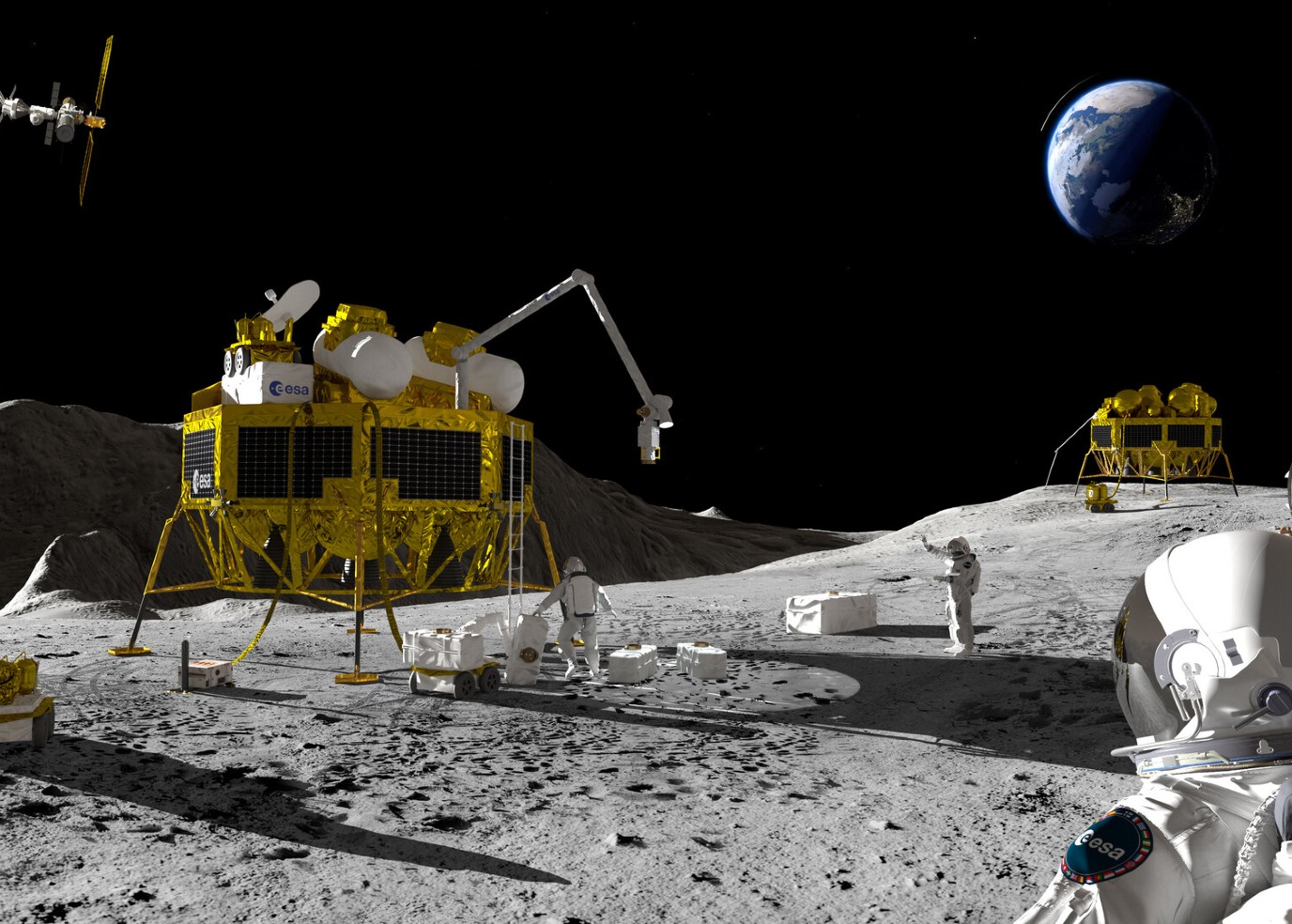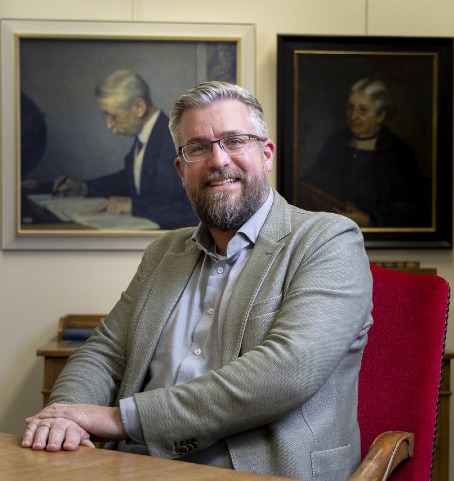We’re going to put a radio telescope on the back side of the Moon

One day, the European Space Agency (ESA) asked Professor Léon Koopmans from the University of Groningen: ‘Would you like to put a radio telescope on the Moon?’ His telescope will tag along on ESA’s Moon lander Argonaut , but first, a lot of things need to be developed.
FSE Science Newsroom | Charlotte Vlek
With a radio telescope on the Moon, Koopmans wants to find out what the Universe looked like during the Cosmic Dark Ages: the period just after the Big Bang, before the first stars were formed. At that time, everything was dark and covered in a mist of hydrogen. This darkness makes it a particularly interesting period: it can give us insight into fundamental physics, while observations are not dominated by starlight.
Not measurable from Earth
It is obvious that a regular, optical telescope cannot be used to inspect this early, dark Universe. A radio telescope, however, can. The hydrogen atoms sent out a radio signal, the 21-centimetre signal, named after the wavelength of the 21-centimetre line. The radiation that reaches us now has travelled a long distance, which makes it possible to ‘look back in time’.
Those signals are largely deflected by the outer layer of our atmosphere and what is left is drowned out by the radio signals that we emit from Earth.
Koopmans was already working with telescopes on Earth that detect the 21-centimetre signal, such as LOFAR (spread across Europe and centred in Drenthe) and NenuFAR (France). But these telescopes cannot pick up radiation from the Dark Ages: those signals are largely deflected by the outer layer of our atmosphere and what is left is drowned out by the radio signals that we emit from Earth.
Koopmans explains: ‘The older these signals are, the longer their wavelengths are.’ While they were travelling in our direction, they were stretched due to the expansion of the Universe; similar to the pitch of a police siren that becomes lower as it moves away from you. These signals have stretched to several meters, up to tens of metres long, which means that they are now in the same range as a lot of other signals. This makes them hard to detect, precisely because they are so old. However, detection should be easier on the Moon.

What do we need to build?
The question for Koopmans and his team is now: what do we need to build to be able to do something like this? Koopmans sums up: ‘Such a radio telescope needs to be compact, simple, and light. We need to develop good algorithms to process the data, but also a good system that can withstand the extreme temperatures, fluctuating between –170 °C and +100 °C.
In an elaborate study with forty engineers from ESA, Koopmans has already identified which aspects need to be considered. These need to be worked out in the near future with colleagues from across Europe. Koopmans: ‘We are thinking about energy sources. Solar panels seem like a good idea, but a battery cannot withstand these low temperatures. You could use energy to keep the battery warm, but then you won’t have energy to do any measurements and to send data to Earth. You could bury everything underground to dampen the fluctuations in temperature, but how would you get that to happen?’
Processing large amounts of data
I’m going to put a radio telescope on the back side of the Moon. How many people can say such a thing?
To the Moon, and soon!
There is enough for the team to work on. The current plan is that the ESA’s Moon lander Argonaut will go to the Moon in 2030, delivering some material for testing. The full telescope will follow around 2035. In terms of space missions, this is extremely fast, although obtaining the results from this research will need a bit more time. At least 10 years of measurements will be needed before any conclusions can be drawn.
How does Koopmans stay motivated for such a large project? He finds all aspects of it mighty interesting. And, says Koopmans: ‘If I talk to a neighbour about our work, I can say: I’m going to put a radio telescope on the back side of the Moon. How many people can say such a thing?’
Reference
| Last modified: | 10 February 2025 09.16 a.m. |
More news
-
06 May 2025
Overcoming grid congestion: ‘Making better use of what we already have’
Grid congestion poses a major problem. There is little to no capacity to connect new households and businesses to the power grid and it risks halting the energy transition. Michele Cucuzzella, Associate Professor of Energy Systems & Nonlinear...
-
29 April 2025
Impact | Rubber recycling
In the coming weeks the nominees for the Ben Feringa Impact Award 2025 will introduce themselves and their impactful research or project. This week: Francesco Picchioni on his innovative way to recycle rubber.
-
29 April 2025
Impact | Improving Human-AI Decision-Making in healthcare
In the coming weeks the nominees for the Ben Feringa Impact Award 2025 will introduce themselves and their impactful research or project. This week: Andra Cristiana Minculescu on her research project on Human-AI Decision-Making in healthcare.
